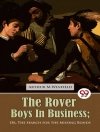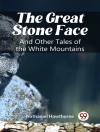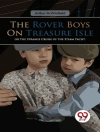Tales and Stories (1891) is a collection of short fiction by Mary Shelley. Despite her reputation as one of the foremost English novelists of the nineteenth century, Shelley also wrote numerous stories for magazines and other publications, earning a reputation as a gifted storyteller in all forms of fiction.
In “The Sisters of Albano, ” a traveler resting on the banks of an Italian lake strikes up a conversation with a beautiful Countess. Inspired by the history and landscape of the region, the Countess tells the tragic story of a local family. During the French occupation of Italy under Napoleon’s rule, Anina and Maria live vastly different lives. Maria, the older sister, is a nun at the convent of Santa Chiara in Rome, while Anina, the younger, is in love with a mysterious outlaw named Domenico. When the French arrive in Albano, Anina goes searching for Domenico, who has gone into hiding with other members of the local resistance. After the young girl is arrested and sentenced to die for violating an officer’s orders, Maria, dressed in her religious habit, appeals to the French on her sister’s behalf. In “Ferdinando Eboli, ” a Neapolitan Count bids farewell to his young fiancée before going off to fight for his king. When he returns, he finds that an impostor has taken over his estate—and married the unsuspecting Adalinda.
This edition of Mary Shelley’s Tales and Stories is a classic of English literature reimagined for modern readers.
Since our inception in 2020, Mint Editions has kept sustainability and innovation at the forefront of our mission. Each and every Mint Edition title gets a fresh, professionally typeset manuscript and a dazzling new cover, all while maintaining the integrity of the original book.
With thousands of titles in our collection, we aim to spotlight diverse public domain works to help them find modern audiences. Mint Editions celebrates a breadth of literary works, curated from both canonical and overlooked classics from writers around the globe.
Yazar hakkında
Mary Shelley (1797-1851) was an English novelist. Born the daughter of William Godwin, a novelist and anarchist philosopher, and Mary Wollstonecraft, a political philosopher and pioneering feminist, Shelley was raised and educated by Godwin following the death of Wollstonecraft shortly after her birth. In 1814, she began her relationship with Romantic poet Percy Bysshe Shelley, whom she would later marry following the death of his first wife, Harriet. In 1816, the Shelleys, joined by Mary’s stepsister Claire Clairmont, physician and writer John William Polidori, and poet Lord Byron, vacationed at the Villa Diodati near Geneva, Switzerland. They spent the unusually rainy summer writing and sharing stories and poems, and the event is now seen as a landmark moment in Romanticism. During their stay, Shelley composed her novel Frankenstein (1818), Byron continued his work on Childe Harold’s Pilgrimage (1812-1818), and Polidori wrote “The Vampyre” (1819), now recognized as the first modern vampire story to be published in English. In 1818, the Shelleys traveled to Italy, where their two young children died and Mary gave birth to Percy Florence Shelley, the only one of her children to survive into adulthood. Following Percy Bysshe Shelley’s drowning death in 1822, Mary returned to England to raise her son and establish herself as a professional writer. Over the next several decades, she wrote the historical novel Valperga (1923), the dystopian novel The Last Man (1826), and numerous other works of fiction and nonfiction. Recognized as one of the core figures of English Romanticism, Shelley is remembered as a woman whose tragic life and determined individualism enabled her to produce essential works of literature which continue to inform, shape, and inspire the horror and science fiction genres to this day.












